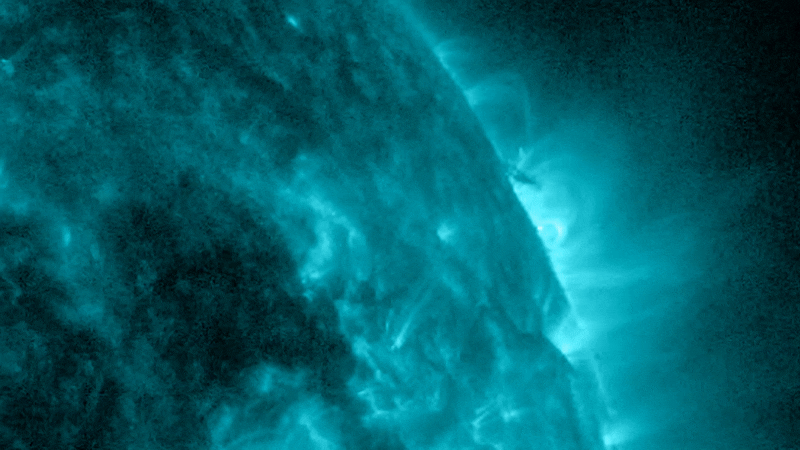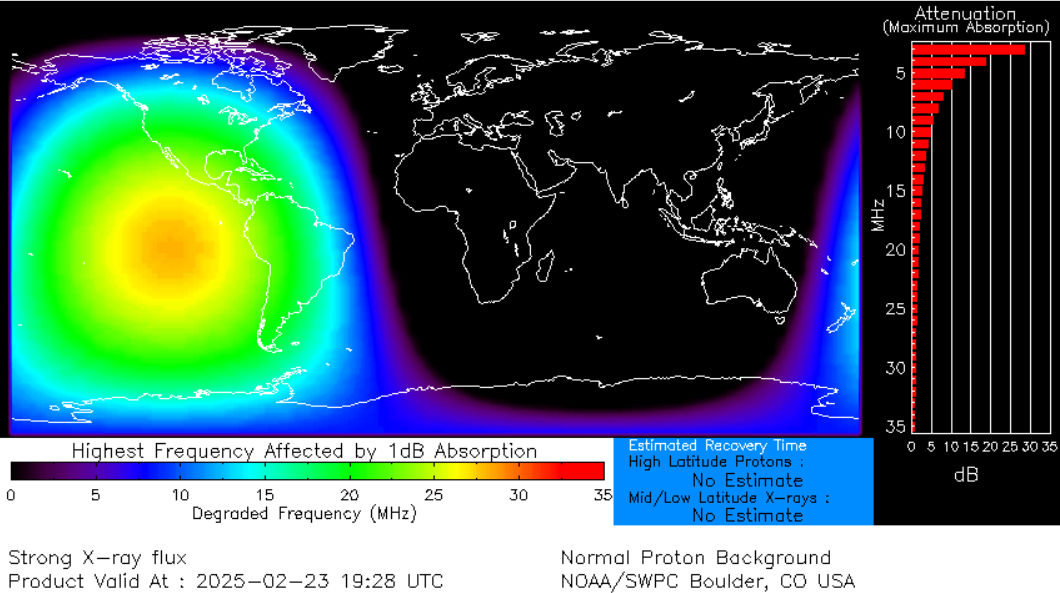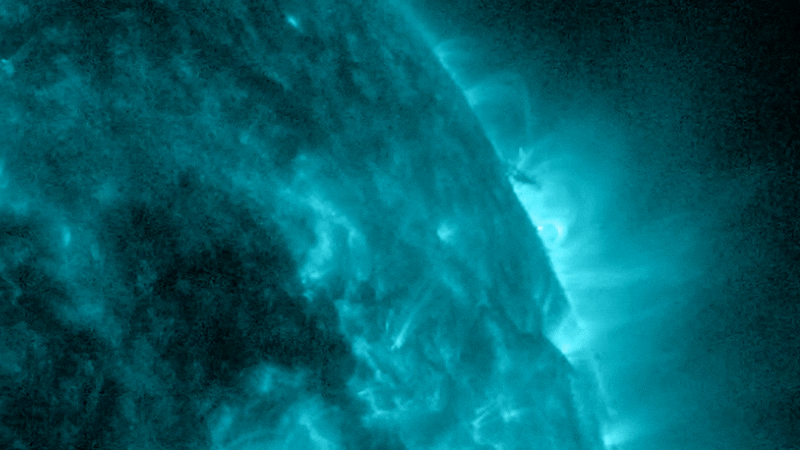The sun ended the weekend with a bang as a sunspot rotating out of our view erupted with a powerful solar flare on Sunday afternoon.
At 2:27 p.m. EST (1927 GMT) on Sunday, (Feb. 24), a X2.0 solar flare peaked out from sunspot AR 4001, which is located just beyond the northwestern limb of the sun. As a result, a shortwave radio blackout event occurred across parts of the Pacific Ocean from the elevated amount of ultraviolet (UV) radiation that accompanied the flare. During this type of blackout, there is a complete or nearly full loss of high frequency (HF) radio signals in the sunlit regions.
X-class flares are the strongest class of solar flare, which are ranked on a 4-class scale. With each increase in class on the scale, the power of the flare also goes up ten times in strength. M-class flares are the second most intense, followed by C-class, and then B, which is at the bottom. The number that follows the letter, in this event at 2.0, distinguishes what the strength was of the individual flare.

Each radio blackout occurrence also is categorized on National Oceanic and Atmospheric Administration (NOAA)’s Space Weather Prediction Center (SWPC) Space Weather Scale, which describes how each level will impact the Earth. This particular event came in as an R3 “Strong”, which is in the middle of the scale underneath “Extreme” (R5) and “Severe” (R4) events.

Scientists at NOAA’s SWPC shared in their forecast discussion on Monday morning (Feb. 24) that there are no concerns of an Earth-bound coronal mass ejection (CME) originating from the X2.0 flare.
Still, sun-watching spacecraft caught impressive views of the ejection as it blasted plasma and magnetic field into space.
And here is the CME from the X2.0 limb flare as seen by LASCO C2. A pretty impressive CME! It is actually fairly wide, spanning some 150° in position angle. Technically it could have a very minor Earth-directed component, but certainly nothing significant. Let’s keep an eye on… https://t.co/elRJlH8Zwb pic.twitter.com/oubXTuZQDgFebruary 24, 2025
When a CME occurs, plumes of plasma are combined with the sun’s magnetic field, and if they reach Earth, it can lead to the creation of geomagnetic storms. When these storms happen, the effects on our planet include impacts to power grids, and also quite the light show, known as auroras, in lower latitudes than normal.
Breaking space news, the latest updates on rocket launches, skywatching events and more!
Though this event did not produce a CME to impact Earth, SWPC forecasters continue to monitor the sun for additional solar flares. They shared in a recent statement that chances remain “slight” for other events at a similar strength taking place through the middle of the week.








